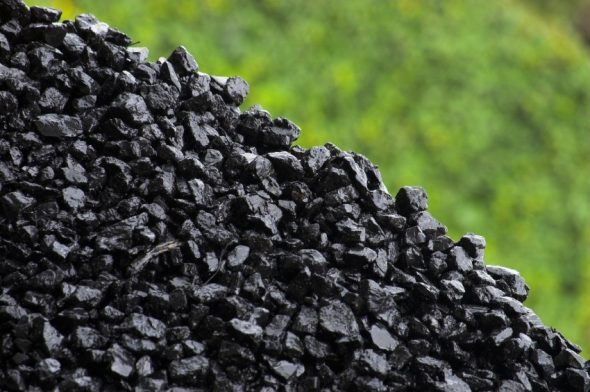US-based credit ratings group Standard & Poor’s has become the latest financial market heavyweight to lend its voice to growing concern that the majority of the world’s remaining coal assets could end up stranded, risking billions of dollars in investments and threatening the economic security of exporting nations.
In a report released on Tuesday, Standard & Poor’s Ratings Services said that, despite the dominant position still held by coal in the world’s primary energy and electricity markets, and the sheer size of global coal reserves – enough to last more than 110 years at current production levels – in an increasingly carbon-constrained environment, most of those assets would wind up having no economic return.
“As governments globally seek to reduce their CO2 emissions, it looks increasingly likely that ‘King Coal’ will lose its crown,” the report said. “However, the pace and scale of change within the coal industry is far from clear, and investors could potentially remain in the dark for some time.”
This was a concern for investors, the report said, not to mention the world’s top 10 coal producers, which in 2012 included Australia (0.4 billion tons) in the top four, after China (3.5 billion tons), the U.S. (1.0 billion tons) and India (0.6 billion tons).
The report notes that demand for coal in the future and its price will rely on numerous factors and their timing, such as China’s changing energy profile; technological breakthroughs, including the introduction of more efficient methods to generate electricity and capture carbon emissions; the introduction of national carbon pricing schemes; and new governmental regulations, such as the recent announcement by the US of a reduction in emissions by 30% by 2030 (compared with 2005).
“We believe new initiatives, such as those made recently by the US and China, may flatten the growth in coal demand over the coming years,” says the report. “However, whether this will lead to a decline of coal use over time (as in the IEA’s 450 ppm scenario) is more uncertain. In our view, any decline in coal would depend on the availability of viable alternatives, such as large-scale gas developments in China or renewables.”
According to a recent report from Pew Charitable Trusts, China remains the world leader in clean energy investment, with $54 billion in investments in renewables in 2013, well above total US investment of $36.7 billion.
The Pew report was released just days after the Intergovernmental Panel on Climate Change released the second part to its fifth assessment report, stressing the need for adaptation to a world in which human fossil fuel emissions were causing the climate to change.
However, China’s efforts to clean up its energy profile were equally driven by increasing internal pressure to slash poverty, expand economic development and solve its air pollution problems.
Whatever was driving the shift by major energy consumers like China, India, the US, and Europe towards cleaner sources, S&P said falling demand for coal, both globally and regionally, would be negative for coal prices and coal miners’ ability to service their debt.
In Australia, concern over just this sort of outcome has been focused on the development of the huge Galilee Basin coal deposit, including the high cost (financially and environmentally) expansion of the nearby Abbot Point coal port.
Late last year, a report commissioned by Greenpeace found that the Indian coal conglomerate behind the Abbot Point expansion, Adani Group, was carrying $12 billion of debt and needed billions more to develop the project.
The report also warned that the Galilee project was uneconomic – “a high cost coal product in a low priced coal market with an uncertain future.”
As the S&P report notes, in 2014 prices for thermal coal have dropped to $75 per tonne from $105 per tonne on average in 2012, due to oversupply and competition from other cheaper energy sources. And while S&P says it expects some sort of rebound in the near term, recent announcements on carbon regulation in the US, attempts to curb pollution in China, and negotiations in the EU over the 2030 framework for climate and energy policies in October were likely to counter this.
Again, the major focus is on China, which now accounts for around 45 per cent of global coal consumption, and its need to transform its energy profile in a relatively short period of time.
“We believe that gas in China is the main threat for the coal industry over the long term,” says the report. “Without it, we believe it unlikely that there will be a reduction in the use of coal over time or an ability to deal with its climate change challenges.”
Not surprisingly, S&P is not as concerned about the impact from developing Asian countries, or from those developed countries, like Australia, which are busy removing carbon prices and going backwards on climate policy.
“We don’t expect CO2 policies to have a significant effect on coal mining in Indonesia, Vietnam, and Australia in the short term,” the report says.
“Absolute demand continues to grow and net production (new growth versus shut production) remains positive.”










